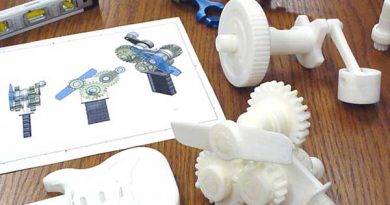How to Maintain Creative Leadership inside an Organization
Many companies provide examples that creative leadership can lead an organization to a better competitive position in the market and while building brand value. Examples of these companies include Apple, Lego, IKEA, Starbucks, Mercedes Benz and others. In the center of creative leadership, design and innovation play an essential role to achieve creativity in different private and public sectors.
In previous articles, we explored the role of design and creativity inside a companies’ different stages of the production process and how it contributes its success such as How Design Contributes to Strategic Thinking Inside the Organization and How Does Apple’s Design Process Work?
Applying creativity and innovation inside a company does not exactly follow a management strategy known by most companies. Innovative strategies should be implemented on a broader approach inside the company. In order to build a successful innovative strategy, the right person should be hired for this specific job which merges creative and managerial skills.
In an interesting observation by Forbes the innovative leader plays an essential role in the success of the company’s overall strategy. However, the creative leadership should be considered in relation to the whole team in order to achieve a definable target and keep the linkage between higher management and the team involved in the process. A number of procedures should be taken into consideration in order to achieve this goal such as the following.
Work with Passion
Unlike the traditional management process, the innovative workflow should be fueled with empathy and passion to achieve business-related goals. Working with passion can boost the team’s creativity, as it will help them think and focus on the creative part of the process. Maintaining this creativity requires putting each one in the team in his or her creative mode in order to get the most out of the design thinking process.
Form Follows Function
Does the form follow function or vise versa? Many have debated through the form/function issue trying to choose which one follows the other. Any from this dilemma, achieving creative leadership inside the organization requires equal focus on both. Both from and function serve each other over the course of building an innovative team while increasing creative value inside the company.
Ongoing Improvement
As many projects have tight deadline, managers believe that giving time for enhancing the process or even improve it for future projects are taking precious time from the current project that could be placed in production instead. While some project management workflows leave around %20 of the project time to research and development (R&D), few companies consider this time and prefer to invest it in the core production tasks. However, analyzing the project flow in top companies that were able to achieve empathy indicate that learning and improving the process is essential part of any project and can have a positive outcome on both on short and long term goals.
Creative leadership requires putting regular focus on the improvement and development of the process in order to learn from current projects in order to reach a shared experience that can be implemented in future projects. Although creative improvement seems to be risky for companies that follow specific process for long time, but the outcome can help put the company in a better position in the market. Less risk can be achieved if the improvement process is applied partially on one project rather than the whole company work process.
Idea Provocation
Unlike regular managers who follow the book in their daily management process, innovation leaders positively provoke their team to think differently by asking questions that have never been asked before while taking the risk of the change. As mentioned above, many companies have the desire to innovate but fear the risk of losing a competitive advantage in the market. Innovative leader think outside the box and a ready to take on the risk. In most cases, an effective analysis for the market through in-depth marketing research can lead to presenting innovative products or service for the consumer and creative new market segments.
Apply Design Thinking
Creativity and innovation requires intensive research and planning more than the traditional projects, because the innovative process aims to provide creative solutions that were never there for the current problems. In order to achieve this part of the research stage, a design thinking process should be implemented before starting innovative projects. Applying this process can help the team to analyze, brainstorm and develop creative products or services. Innovative leaders do not just dictate a given creative concept for the team to follow, they share ideas and creatively collaborate by putting all the creative minds together inside one design thinking process.
Adding the design thinking process after the marketing research process can help the team to have the proper information in hand, which can help in reaching a better understanding about the problem and subsequently initiating the proper ideas for the discussed product or service.
Get Experience from Failures
Failure is one of the manager’s biggest fears, yet innovative leaders should think of failure in a differently. While failure or facing problems can have dramatic consequences on the project process, creative leadership requires a prospective understanding that it is an opportunity to learn and improve the process accordingly.
Casual Workplaces
Rather than the logical process, creative thinking does not follow a specific route. Observing the companies that work in a casual environment and comparing them with the companies that work in a regular workplace environment indicates that restricted systems full of rules and regulation limits creativity. In contrast, casual workplaces which give employees freedom and flexibility help to unleash creativity. Earlier, we mentioned that innovative leaders should be able to put each one in the team in the creative mode that enables unleashing potential creative ideas. The casual workplace facilitates the resources that can help innovative leaders to achieve this goal.
While the above tips can help achieving creative leadership inside the organization, other procedures can contribute improving the creativity and innovation values inside the company such as building policies that focus on the people rather than the profits alone and reducing the gap between managers and employees.






